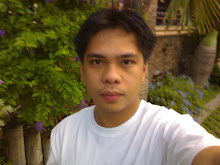Alps, great mountain system of south central Europe, forming an arc some 1200 km (750 mi) long from the Gulf of Genoa to the Danube River at Vienna. The Alps are the highest and most densely settled mountain belt of Europe, occupying an area of about 200,000 sq km (about 80,000 sq mi) and inhabited by some 20 million people. The valleys of the Alps are areas of year-round settlement; the flatter upland tracts comprise pastures and seasonally inhabited settlements, and the zone above the timberline serves as pasture and for recreation. Important economic activities include tourism, dairy farming, forestry, the production of hydroelectric power, and the extraction of salt and iron ore. With its important pass routes between central and southern Europe, the Alps have been an area of transit trade since ancient times.
Structurally, the Alpine mountain system is divided into the Western and Eastern Alps by a furrow that leads from the Rhine Valley in northern Switzerland, across Splügen Pass to Lake Como in northern Italy. The Western Alps average about 1000 m (about 3300 ft) higher and are narrower and more rugged than the Eastern Alps. The highest peak of the Alps, Mont Blanc (4807 m/15,771 ft), is on the Franco-Italian border. Among the principal ranges are the Maritime, Ligurian, Cottian, and Alpes Grées in France and Italy and the Bernese, Glarus, and Pennine (or Valais) Alps in Switzerland. The Jura Mountains are a northwestern outlier of the French Alps. From Lake Geneva the Alpine ranges curve northeast and become more widely separated, attaining a width of 250 km (155 mi) in the center of the arc. The ranges of the Eastern Alps diverge, finally to plunge to the Danubian Basin near Vienna. Well-known mountain chains of the Eastern Alps are the Bavarian Alps, Allgäu Alps, Hohe Tauern, and Niedere Tauern in the north and the Dolomite and Carnic Alps in the south.
Summit regions above 3000 m (about 9800 ft) are glaciated. Peaks and crests, however, rise above the ice, displaying jagged shapes (toothlike horns, needles, and knife-edged ridges). About 2% of the total area of the Alps is covered by ice. The longest valley glacier, the Aletsch Glacier in the Bernese Alps, is 18 km (11 mi) long.
Broad and deep longitudinal valleys, which hold the courses of the upper Rhône, upper Rhine, Inn, Salzach, Mur, and Drava (Drau) rivers, separate the structural units of the Alps, and contain the main settlements and the principal arteries for traffic. Deeply incised, transverse tributary valleys lead up to the pass regions. Passes at elevations above 2000 m (about 6600 ft) are blocked with snow during the winter months; these include the Mont Cenis, Great Saint Bernard, Simplon, and Saint Gotthard passes. Brenner Pass, at 1,371 m (4,497 ft), and Reschen Pass, at 1508 m (4948 ft), provide the easiest crossings. Engineering feats, such as tunneling of the higher passes for highways and railroads, have lessened the barrier effect of the Alps.
Source: Encarta








0 comments:
Post a Comment